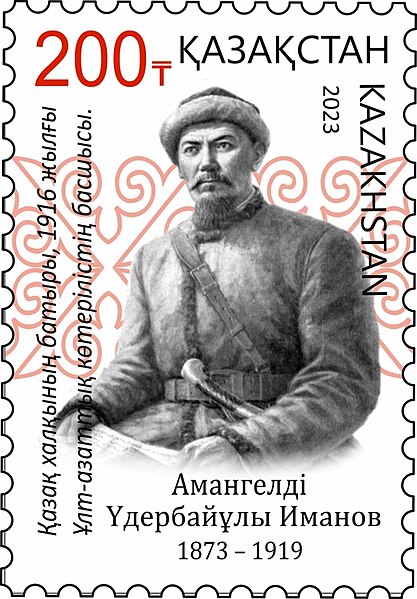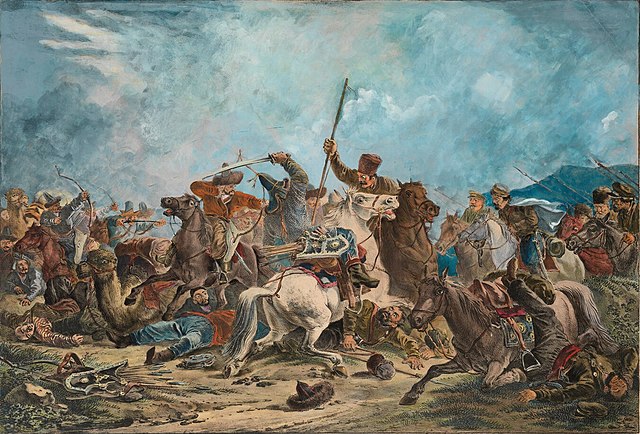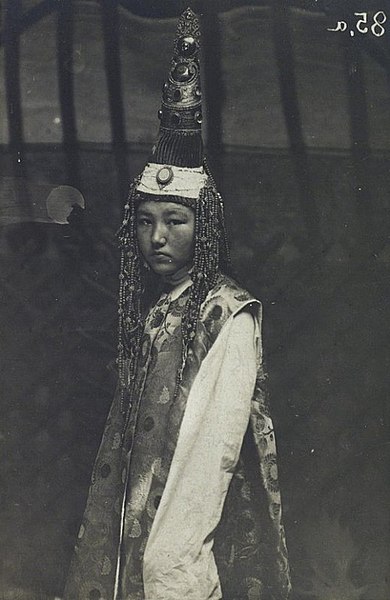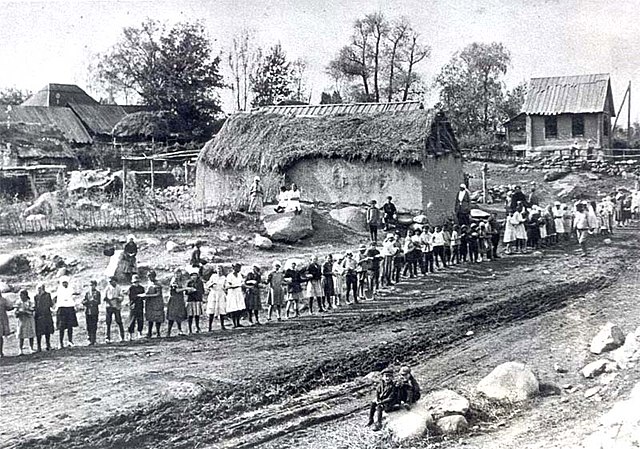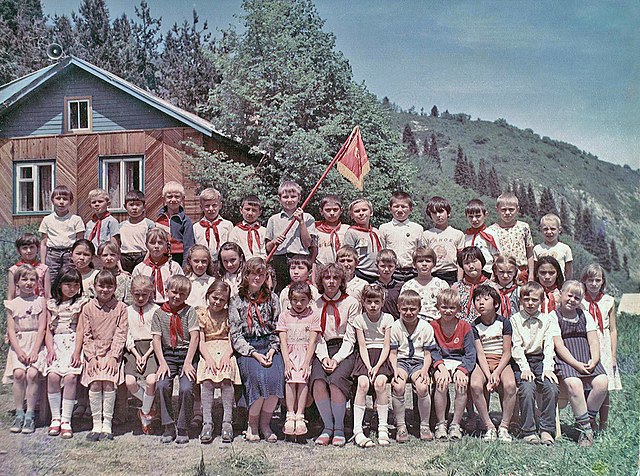Central Asian revolt of 1916
The Central Asian revolt of 1916, also known as the Semirechye Revolt and as Urkun in Kazakhstan and Kyrgyzstan, was an anti-Russian uprising by the indigenous inhabitants of Russian Turkestan sparked by the conscription of Muslims into the Russian military for service on the Eastern Front during World War I. The rampant corruption of the Russian colonial regime and Tsarist colonialism in all its economic, political, religious, and national dimensions are all seen as the contributing causes.
Amankeldı İmanov (on postmark) was the leader of Kazakh revolt on Turgay front
The Tian Shan range seen from the West in 1915
Czarist Russian officials at Pamirski Post near the Chinese border in 1915
Kazakhstan, officially the Republic of Kazakhstan, is a landlocked country mostly in Central Asia, with a part in Eastern Europe. It borders Russia to the north and west, China to the east, Kyrgyzstan to the southeast, Uzbekistan to the south, and Turkmenistan to the southwest, with a coastline along the Caspian Sea. Its capital is Astana, while the largest city and leading cultural and commercial hub is Almaty. Kazakhstan is the world's ninth-largest country by land area and the largest landlocked country. It has a population of 20 million and one of the lowest population densities in the world, at fewer than 6 people per square kilometre. Ethnic Kazakhs constitute a majority, while ethnic Russians form a significant minority. Officially secular, Kazakhstan is a Muslim-majority country, although ethnic Russians in the country form a sizeable Christian community.
Ural Cossacks skirmish with Kazakhs
Kazakh woman in wedding clothes, 19th century
Stanitsa Sofiiskaya, Talgar, 1920s
Young Pioneers at a Young Pioneer camp in the Kazakh SSR

